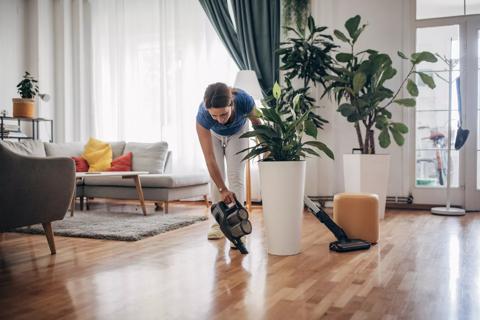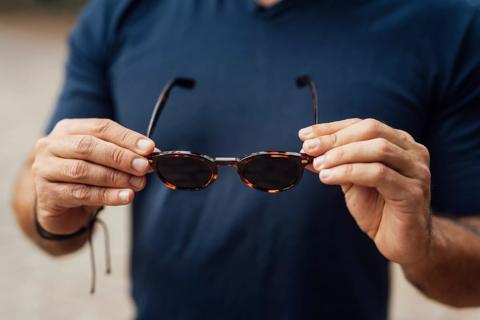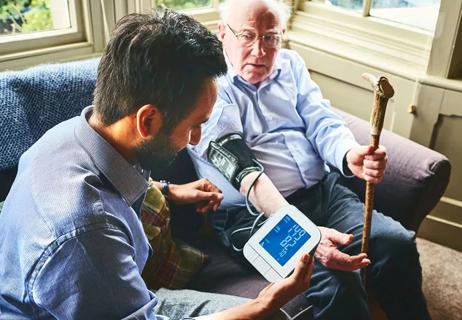Yes, treatments are available — and the earlier you’re diagnosed and treated, the better

If you or a loved one has been diagnosed with diabetes-related macular edema, or DME (also called diabetic macular edema), and diabetic retinopathy, you probably have questions. Many of them.
Advertisement
Cleveland Clinic is a non-profit academic medical center. Advertising on our site helps support our mission. We do not endorse non-Cleveland Clinic products or services. Policy
Living with diabetes is hard enough. But layering on a potentially blinding eye condition? It’s a lot to take in. We get it. And we want to help.
So, we talked with ophthalmologist and retina specialist Aleksandra Rachitskaya, MD, to get answers to your questions about living with diabetes-related macular edema.
Diabetes can take a toll on your health in various ways — it affects your heart, kidneys, peripheral nerves, skin and, yes, your eyes.
But why?
Diabetes can damage blood vessels all over your body. And the blood vessels in your eyes are no exception.
Diabetes can damage the blood vessels in your retina (the very back layer of your eyeball). That’s called diabetes-related retinopathy.
One way that the blood vessels are damaged is when the blood vessels in your eyes lose their blood vessel wall integrity and start to “leak.” That allows fluids to build up in your macula (the center of your retina). When your macula swells as a result of that excess fluid, it’s called macular edema.
In the early stages, you probably won’t notice any changes in your vision. But an eye care specialist can spot early signs of the condition with regular retina screenings.
If the condition progresses, you may experience symptoms like:
Advertisement
“Your macula is responsible for your central vision — seeing things that are directly in front of you and seeing details,” Dr. Rachitskaya explains. “So, people who have more advanced diabetes-related macular edema tend to describe it as having blurry vision or out-of-focus vision. The swelling in the macula can affect their ability to drive, read, work on a computer, knit or do anything that requires that central vision.”
Left untreated, your vision may continue to deteriorate.
Getting regular eye exams is important to catching diabetes-related macular edema and diabetic retinopathy in the early stages, before you experience any vision problems or before any vision symptoms you have worsen.
You may have heard that people lose their vision from diabetes-related eye conditions. Maybe you’ve seen other people lose their sight or heard their stories. Or maybe you’ve started to experience some vision loss yourself. So, it’s natural to worry about losing your sight completely.
“Diabetes-related macular edema and diabetic retinopathy in the advanced stages can be potentially blinding. That said, we have excellent treatments, and getting prompt treatment can make a big difference,” Dr. Rachitskaya reassures.
Treatments for diabetes-related macular edema have come a long way.
“Historically, we used to have mostly laser treatment for diabetic macular edema, but today, we can use injections to control the condition,” Dr. Rachitskaya shares. “For some people, those treatments can reverse their symptoms and improve their vision.”
A trained retina specialist delivers these medications. They’re injections in the part of your eye called the vitreous humor, which is the gel-like substance between your eye’s lens and your retina.
Injections aren’t a cure for diabetes-related macular edema. But used consistently, they can help people maintain their vision and could potentially reverse some vision loss. How often and how many injections you’ll need depends on the severity of your condition.
“Early and consistent treatment can help ensure you’re able to drive and able to live independently without many obstacles to your vision,” Dr. Rachitskaya says.
Dr. Rachitskaya recommends a two-pronged approach to protecting your vision when you live with diabetes:
Advertisement
Keeping your blood sugar at a healthy level typically includes a combination of medications, diet, exercise and, if indicated, insulin. An endocrinologist or other physician who specializes in diabetes management can help you find a plan that works for you.
Managing any other conditions that arise as a result of diabetes is important as well. Work with your healthcare team to prevent and care for conditions that are often associated with diabetes, including obesity, kidney disease, heart disease, sleep disorders and more.
But, Dr. Rachitskaya notes, it’s important to know that managing diabetes may not completely protect you from developing diabetes-related macular edema. Because the ghosts of blood sugars past can still come back to haunt you.
“Diabetes-related eye conditions like retinopathy and macular edema are not only affected by the current blood sugar control, but also by historic blood sugar,” she explains. “It’s a cumulative disease. So, it’s very important to attempt to control your blood sugars from the very beginning of your diagnosis and to be seen regularly by an ophthalmologist or retina specialist.”
Advertisement
Talk with your healthcare team about your best plan for managing diabetes and getting prompt treatment for diabetes-related macular edema, diabetic retinopathy and other diabetes complications.
Advertisement
Learn more about our editorial process.
Advertisement

Having a first-degree biological relative with this eye condition raises your risk, but other factors are at play, too

Preserving your social life and protecting your mental health are key to living well with vision loss

Start low-vision rehabilitation as soon as possible and see your retina specialist at least every six months

Getting connected to the right healthcare providers can make a big difference

Taking care of yourself helps you take care of your loved one

Installing grab bars and taping down area rugs may make navigating life with vision loss easier

Eating a balanced diet can help protect your eyes and may prevent AMD from progressing

They may help, but it depends on factors like the stage of your disease

Start having sex about 72 hours before ovulation, then at least every other day during your fertile window

Attachment theory suggests that your earliest relationships shape connections throughout your life

It isn’t a recognized mental health disorder, but research shows that problematic social media use can negatively affect your mental health, self-esteem and sleep